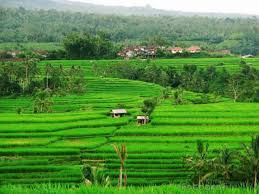
If you're doing your first scenery shoot, you may be disappointed with the outcome once your images are in print. You may wonder what's wrong and why the images don't look as professional as others. Well you're not alone. Amateur and professional photographers have both asked themselves the same thing. This is still a mystery to many photographers.
One important key is to have an interesting subject. Scenic photography is just as much an art as painting a landscape, taking a portrait or still life. If you have a view that takes your breath away in the first place, then that's a huge advantage for you. You can't always count on that though. You'll have to learn how to use what you have.
Think with a photographic mind. You can't alter the scenery in front of you, but you can learn which scenes present better image opportunities, even recognize that even portions of bad scenery may produce an excellent image. There are many techniques in photography that you can apply to improve your success. When lining up your shot, be constantly aware of the horizon line, how everything works inside your frame to produce an interesting image. Learn how the elements work together for good composition and also learn when to move to another location.
Are you shooting in daylight or nighttime? What season is it? Timing is important too, especially when shooting a sunrise or sunset. You'll need to be there ahead of time. All of these things need to be considered in landscape photography. If you're in a strange location it's a good idea to check local weather reports in order to schedule your activity or at least be prepared for the elements. Cold damp weather isn't necessarily a bad thing in photography. Often foul conditions produce very interesting effects. Talk to the locals, they can tell you things that you wouldn't know such as when the foliage turns, or when and where certain flowers appear.
The natural tones and color of nature are an important element in landscape photography. Use color to add splash but be sure it enhances your total image and not detract from it. You don't want viewers to focus ONLY on that particular spot of bright color. Another avenue for excellent landscapes is opting for black and white photography. Here, light and shadow play a big role in images that have impact.
When you're "on location" animals may give you an added surprise. Be prepared at all times. The longer you spend in a particular area, the better chance you'll have of spotting some form of wildlife. You want your camera ready so that you can capture this moment on film. The basic rules of photography can help you produce images that come to life. Get to know them and keep them in your head whenever you are shooting.
In closing learn the basic rules, remember them, choose your surroundings, learn how to use parts of bad scenery to produce good images, use color and tone, and of course, have a good camera all set to go. Most of all, enjoy yourself!
Don was born in Massachusetts, grew up in Michigan and worked for General Motors until retiring. He and his wife moved to Texas and later to S. Carolina. They both enjoy their growing family and of course their dogs. Travel has always been enjoyable for both, but especially for Don as he enjoyed photographing all the beautiful places around the world and the wonderful memories he's recorded.


